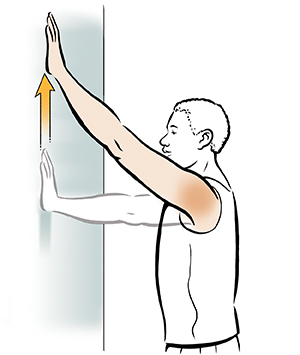8 Best Shoulder Bursitis Exercises
The 8 Best Exercises for Shoulder Bursitis Relief
Shoulder bursitis is a painful condition that affects the shoulder joint, restricting movement and causing inflammation. Finding the right shoulder bursitis exercises can be key to managing pain and regaining mobility.
In this comprehensive guide, we’ll cover the best exercises for shoulder bursitis to relieve pain, improve range of motion, and strengthen the surrounding muscles.
What is Shoulder Bursitis?
The shoulder joint contains small, fluid-filled sacs called bursae that cushion bones, muscles and tendons as you move your arm. When these bursae become irritated and inflamed, this is known as shoulder bursitis.
Common causes include:
- Repetitive overhead motions
- Overuse from sports or work
- Direct shoulder trauma/injury
- Rheumatoid arthritis
The most common site for shoulder bursitis is in the subacromial space under the acromion bone. Other areas include the subdeltoid bursa and subcoracoid bursa.
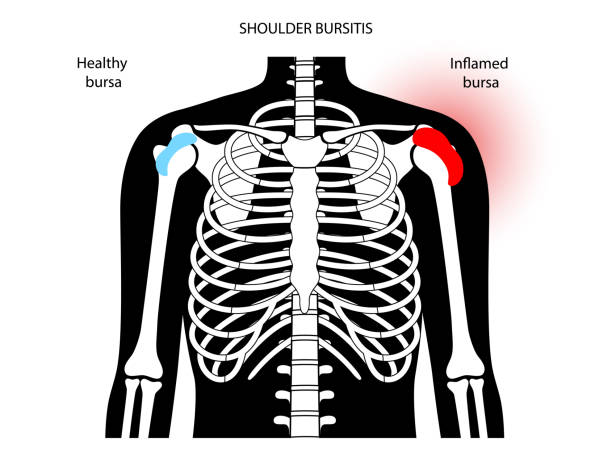
Symptoms of shoulder bursitis include:
- Pain with overhead reaching or lifting
- Stiffness and decreased range of motion
- Tenderness directly over the inflamed bursa
- Swelling around the shoulder joint
Seeing an orthopedic surgeon is important to correctly diagnose shoulder bursitis and rule out other conditions like a rotator cuff tear. X-rays or MRI scans may be ordered.
Conservative treatment options focus on resting the shoulder along with bursitis exercises to relieve pain, improve mobility, and strengthen the rotator cuff muscles. If symptoms persist, surgery like arthroscopic bursectomy may be needed to remove inflamed bursal tissue.
8 Exercises for Shoulder Bursitis
Under guidance from your doctor or physical therapist, the following bursitis shoulder exercises can aid recovery. Start slowly and stop if any move causes pain.
1. Scapular Exercise – Wall Pushups
Facing a wall with hands at shoulder height, slowly bend elbows to bring body towards wall then straighten again. Works serratus anterior muscle. Do 2-3 sets of 10-15 reps.
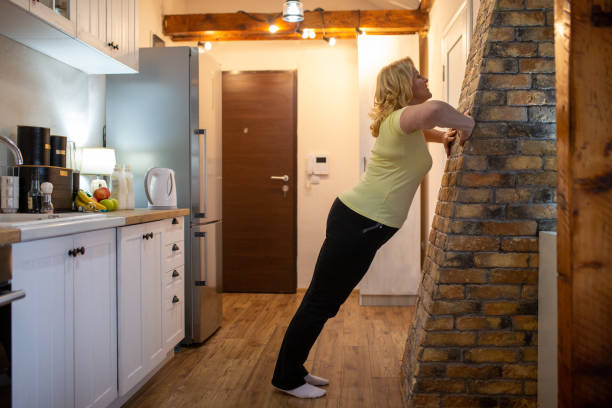
2. Posterior Stretching Exercise
Gently pull injured arm across body using other hand until stretch felt in back of shoulder. Hold 15-30 seconds. Do 2-4 times.

3. Behind-the-back Stretch (Internal Rotation)
3 variations. Light: Rest hand in back pocket. Moderate: Grasp wrist of injured arm, palm out, raise arm up behind back. Advanced: Use a towel to pull arm farther behind back. Hold 15-30 seconds, repeat 2-4 times.
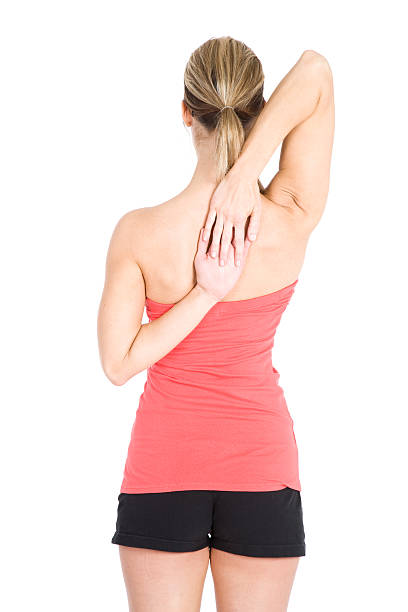
4. Overhead Stretch
Bend forward, arms straight, grasp solid surface like table or doorknob. Step back to extend shoulders. Hold 15-30 seconds, repeat 2-4 times.
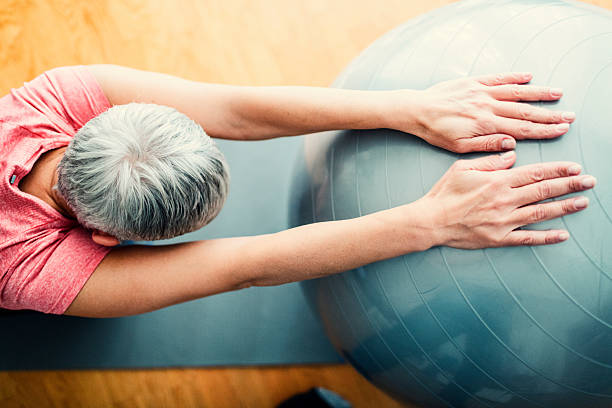
5. Shoulder External Rotation
Hold exercise band with elbows at sides, gently rotate arms out until stretch is felt. Bring hands back together. Do 3 sets of 10 rotations.

6. Scapular Exercise: Retraction
Attach resistance band to fixed object. Pull band back with elbows bent to bring shoulder blades together. 8-12 reps. Can progress to arms out to side.

7. Shoulder blade Squeeze
Stand with arms at sides. Squeeze shoulder blades together without raising shoulders up. Hold for 6 seconds, repeat 8-12 times.

8. Internal Rotator Strengthening Exercise
Attach resistance band to doorknob. Bend elbow 90 degrees, rotate forearm in towards belly. Keep upper arm fixed. 8-12 reps. Can place towel between elbow and side for comfort.
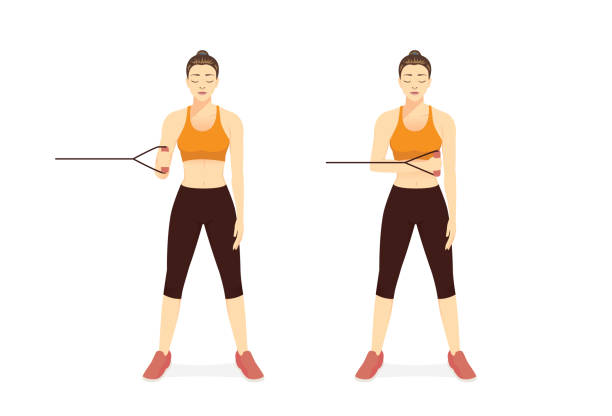
Exercises After Surgery for Shoulder Bursitis
If conservative treatment fails, an orthopedic surgeon may perform arthroscopic bursectomy surgery to remove inflamed bursa tissue and any bone spurs rubbing against it.
Approval from your surgeon is needed before starting rehab exercises after shoulder bursitis surgery. The following exercises may be integrated based on your progress:
1. Shoulder-Forward Elevation
Cup hands together, lift arms above head keeping elbows straight. Hold for 10-20 seconds, slowly lower. Repeat several times.
2. Supported Shoulder Rotation
Rotate forearm so hand moves from one point to another at waist height while keeping elbow bent and upper arm still.

3. Walk-Up Exercise
“Crawl” fingers up wall as high as possible. Hold 10-20 seconds. Slowly lower hand back down.
4. Shoulder Extension
Stand with back against wall, arms out at sides pressing hands onto wall. Hold for 5 seconds.
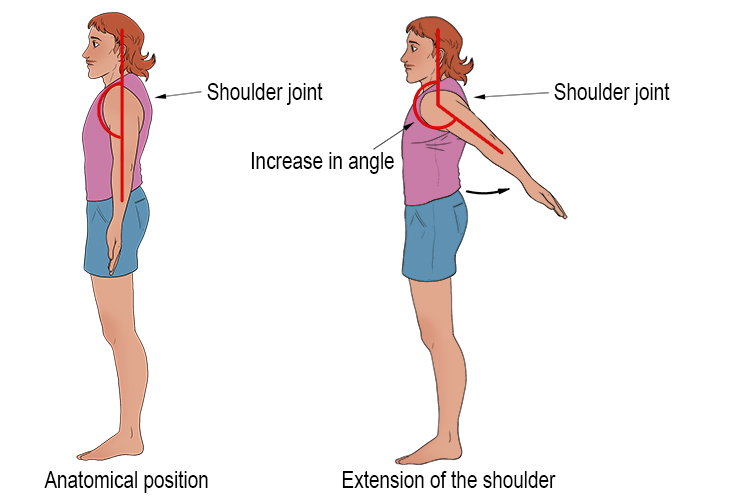
Start range of motion activities very gently in the early weeks after surgery before progressing to strengthening.
Follow all protocols from your surgeon and attend physical therapy sessions.
Exercises to Avoid if You Have Shoulder Bursitis
While recovering from shoulder bursitis, certain motions can aggravate symptoms and delay healing.
Avoid:
- Overhead reaching and lifting
- Heavy lifting or rotator cuff strain
- Downward arm motions like upright rows
- Push ups or dips placing weight through shoulders
- Unstable movements causing pain
Those using shoulders heavily at work or sports like carpenters, athletes, musicians, and gardeners may need to take a break from aggravating activities during recovery.

Exercises to Avoid After Shoulder Bursitis Surgery
Post-operative guidelines exist for a reason after shoulder surgery - to ensure proper healing and prevent re-injury. After bursectomy surgery, you’ll be in a sling for around 4-6 weeks.
Avoid:
- Any reaching, lifting or pulling
- Starting rehab exercises before surgeon approval
- Progressing too quickly before tendon tissue has strengthened
Tendons recover much slower than skin or other tissues - around 3 months for full recovery. Give your body ample time to heal before taxing the joint.
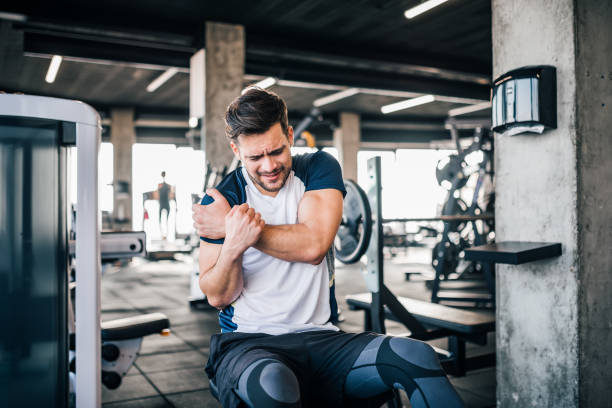
Takeaway
Treating shoulder bursitis requires finding the right combination of rest, conservative care, and bursitis shoulder exercises tailored to your needs. Work with an orthopedic doctor specializing in shoulders to determine the optimal recovery plan.
The 8 bursitis exercises listed above can improve mobility and strengthen muscles around your shoulder once cleared by your provider.
Remember to start slowly and avoid overdoing it. Consistency with the rehab plan is key to getting back motion and strength.
Shoulder bursitis can be extremely painful and debilitating if not properly treated and managed. Your orthopedic surgeon will likely recommend physical therapy focused on specific shoulder bursitis exercises in addition to any other treatment.
The right exercises and stretches can aid recovery by restoring range of motion, building strength, and relieving inflammation around the bursae.
Let's explore some sample exercise routines a physical therapist may prescribe.

Sample Exercise Routines for Shoulder Bursitis
Your individual shoulder bursitis exercise program will depend on factors like:
- Location of inflamed bursae
- Severity of symptoms
- Cause and duration of bursitis
- Age and overall health
A physical therapist conducts an evaluation to design a tailored treatment plan. Here are some examples of exercise routines they may recommend.
Exercise Routine for Mild-Moderate Bursitis
For milder cases of shoulder bursitis, a PT may recommend:
- Apply heat then ice for 15 minutes to reduce inflammation
- Begin gentle stretches like posterior capsule stretch, overhead triceps stretch, and cross-body stretch
- Try scapular squeezes and wall push ups to activate serratus anterior
- Use resistance bands for external rotation and internal rotation exercises
- Gradually incorporate sidelying external rotation with dumbbell and upright rows if tolerated
- Finish with icing for pain relief
Post-Surgery Exercise Routine
If conservative treatment fails, arthroscopic bursectomy surgery may be performed to remove inflamed bursal tissues and spurring. Post-surgery protocols will slowly introduce shoulder motion.
A program may involve:
- Weeks 1-2: Gentle pendulum swings and passive arm motion exercises while avoiding active movement
- Weeks 3-4: Begin active arm elevation to 90 degrees and slight internal rotation
- Week 5-6: Progress to 120 degree elevation, add shoulder extension and scapular exercises
- Week 7-8: Advance to 150 degrees elevation, start resistance band exercises like internal and external rotations
- Week 9+: Work towards full elevation and strength, begin light weights for rows, bicep curls etc.
Follow all guidelines from your orthopedic surgeon before advancing rehabilitation stages after surgery.
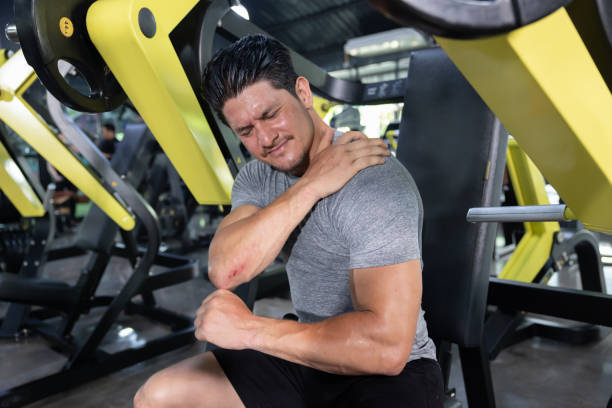
Common Physical Therapy Exercises for Shoulder Bursitis
While individual routines will vary, some of the most common and effective shoulder bursitis exercises used in physical therapy include:
Passive Arm Motion
This early shoulder bursitis exercise promotes mobility after injury or surgery by moving the arm through its range of motion while relaxing the shoulder. A therapist or helper lifts and moves the arm.
Benefit: Restores mobility, prevents scar tissue formation.
Assisted Shoulder Flexion

Using an assistive device like a therapy stick or broomstick, grasp the stick with both hands slightly wider than shoulder width. Lift arms upward, lead with the affected arm, until you reach a comfortable height.
Benefit: Gently regains forward elevation mobility after injury or surgery.
Supine Passive External Rotation

Lie on your back holding a stick or cane vertically with both hands shoulder-width apart. Keeping elbow bent 90 degrees, use your good arm to push the stick to rotate injured arm outwards.
Benefit: Improves external rotation range of motion and stretches posterior capsule.
Isometric Internal & External Rotation

Stand facing a wall or door frame. Bend elbows keeping upper arms pressed against your sides and forearms pointed forward. Push forearms against the wall without allowing actual movement. Build to 10 seconds then relax.
Benefit: Strengthens rotator cuff in shortened ranges that avoid impingement.
Horizontal Abduction Stretch

Lie on your back and bend your elbows to 90 degrees. Using a stick or belt, grasp the object with both hands and move arms sideways stretching across your body at shoulder level. Hold for 30 seconds before releasing.
Benefit: Stretches posterior shoulder capsule and can relieve night pain.
Towel Internal Rotation Stretch
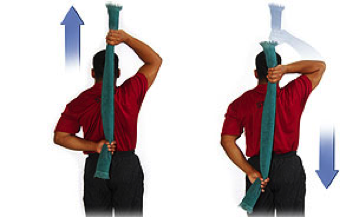
Place towel behind your back and grasp it with hands behind your hips. Use non-affected hand to gently pull upward and increase stretch behind injured shoulder. Can be done seated or standing.
Benefit: Stretches muscles responsible for internal rotation like subscapularis.
Follow guidelines from your orthopedic doctor or physical therapist when performing these shoulder stretches and exercises after bursitis diagnosis.
Proper form is vital to receive maximum benefit and avoid further injury. Consider working one-on-one with a PT if you have had bursectomy surgery.
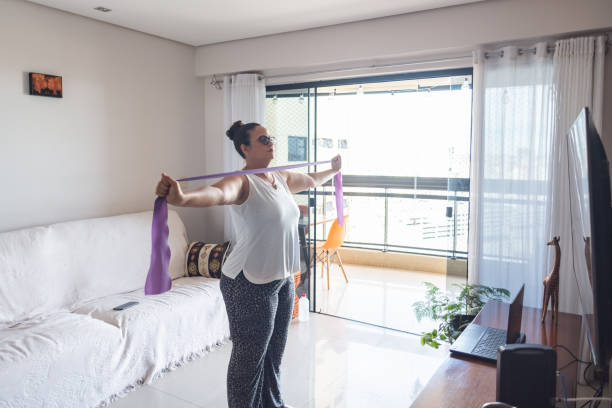
Home Exercise Program for Shoulder Bursitis
Your orthopedist or PT will provide a custom home exercise program with clear illustrations and instructions for continuing rehab in between therapy appointments. This ensures you safely progress through different phases of healing.
Follow all guidelines about number of sets, reps, and intensity provided. Typical home programs for shoulder bursitis include some of the following:
- Gentle range of motion exercises using a stick, rope or pulley
- Elastic resistance band exercises like internal and external rotation
- Isometric exercises pushing palm against a wall
- Light free weight or dumbbell exercises below shoulder level
- Scapular control and posture exercises
- Joint mobilization using a strap to provide gentle traction
- Soft tissue mobilization using tennis ball against wall
Avoid any painful exercises causing shoulder impingement. Stop activity causing an increase in swelling or inflammation. Apply ice after performing exercises as tolerated.
Consistency with the home exercise routine is vital for regaining strength and range of motion. Even after formal therapy ends, continue exercises that keep your shoulder flexible, strong, and stable.
This helps prevent recurrence of bursitis symptoms.
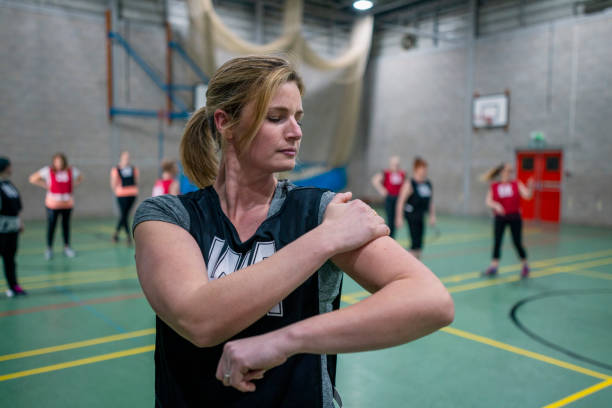
When to Return to Sports & Activities
Resting the shoulder initially is key for proper healing after a shoulder bursitis diagnosis. But adequate recovery time before returning to sports and strenuous overhead work is also important to avoid re-aggravating the injury.
Every person heals differently based on factors like:
- Severity at time of injury
- Types of treatment received
- Commitment to rehab exercises
- Individual anatomy and biology
On average, here are rough timeframes before expecting to resume activities:
- Desk work - 4 weeks if no aggravating use of injured arm
- Light exercise like walking - 4 weeks
- Swimming gently with fins - 6-8 weeks
- Easy jogging straight ahead - 8-12 weeks
- Golf, tennis - 12+ weeks
- Throwing, heavy overhead sports - 6+ months
Discuss your timeline for getting back specific activities with your orthopedic doctor. Progress gradually once cleared to return rather than jumping full speed into intense sports that require shoulder strength and mobility.
Stop immediately if shoulder pain recurs. Some cases of bursitis may require permanent activity modifications if it continues flaring up.
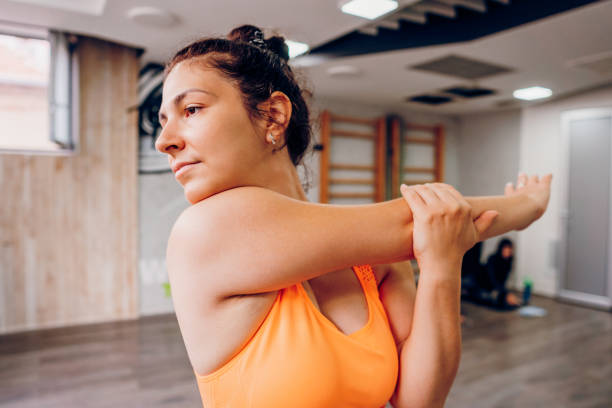
Prevention Tips for Shoulder Bursitis
While anyone can develop shoulder bursitis, you can reduce likelihood with some preventative steps:
- Warm up shoulders pre-workout with gentle range of motion
- Build strength evenly with external and internal rotator cuff exercises
- Avoid overusing shoulders through repetitive strain
- Use proper form when weight lifting overhead
- Take regular breaks at desk jobs requiring arms extended out
- Sleep on side to prevent direct pressure on shoulder joints
- Use ergonomic pads and equipment aids if needed
- Maintain a healthy body weight
- Consider a cortisone injection if bursitis starts developing
Some causes like underlying inflammatory conditions can’t be prevented. If you’ve had shoulder bursitis before, keeping shoulders flexible and strong can help avoid reoccurrence.

Office Ergonomics for Shoulder Pain Relief
For those working desk jobs, proper office ergonomics are essential to minimize risk of shoulder overuse injuries.
Follow these tips:
- Posture: Sit tall keeping ears, shoulders and hips aligned. Use a lumbar pillow for low back support.
- Monitor position: Center screen directly in front of you, about an arm's length away at eye level.
- Keyboard and mouse: Keep these close at near elbow height to prevent overreaching.
- Desk height: Adjust so elbows bent 90 degrees and wrists straight when typing.
- Phone: Avoid cradling handset between ear and shoulder. Use speakerphone or headset instead.
- Breaks: Take regular short stretch breaks to relieve tension in shoulders and upper back.
Ask your employer for an ergonomic assessment to ensure your workstation allows proper shoulder positioning all day.
This minimizes risk for not only bursitis but general wear-and-tear on the joints too.

When to See a Doctor
If shoulder pain persists beyond a few days or you lose strength/mobility, seek attention. A physician can check for:
- Possible bursitis
- Rotator cuff injury
- Adhesive capsulitis (frozen shoulder)
- Fracture
- Dislocated shoulder
Orthopedic doctors specialized in upper extremity conditions can best evaluate your symptoms, order imaging if needed, provide a diagnosis, and outline the optimal treatment plan to resolve shoulder problems.
This may include referral to physical or occupational

FAQ Section
What are the best exercises for shoulder bursitis?
The best exercises for shoulder bursitis aim to reduce pain, improve range of motion, and strengthen the muscles around the shoulder without aggravating the condition.
Exercises include:
- Scapular Exercise – Wall Pushups: Helps strengthen the serratus anterior muscle, vital for shoulder stability.
- Shoulder External Rotation: Using surgical tubing or a TheraBand, keep your elbows at your sides and bent to 90 degrees. Gently rotate your arms outwards, keeping your shoulders relaxed.
- Internal Rotator Strengthening Exercise: Attach resistance material to a doorknob. With your elbow bent at 90 degrees and the arm against your body, rotate your forearm in towards your belly.
- Shoulder Blade Squeeze: A key exercise for improving posture and strengthening the muscles around the shoulder blade.
These exercises focus on maintaining good range of motion in your shoulders and strengthening the muscles without putting excessive strain on the bursae.
What are some stretches for shoulder bursitis?
Stretches for shoulder bursitis aim to gently elongate the muscles and tendons around the shoulder, improving flexibility and reducing tension. Effective stretches include:
- Behind-the-Back Stretch (Internal Rotation): A gentle stretch for the muscles under your shoulder. Start with your arm at your side, then move it behind your back. Use a towel to enhance the stretch by holding one end with the affected arm behind your back and the other end with your opposite hand, pulling gently to increase the stretch.
- Overhead Stretch: Step forward and lower your upper body while keeping your hands on a solid surface like a table. You should feel a gentle stretch in your shoulders. Keep your elbows slightly bent.
- Horizontal Abduction Stretch: Lying on your back, move your arms back with elbows slightly bent, using a towel or a stick to help maintain the stretch. Aim to keep your shoulder relaxed and hold the stretch for at least 15 to 30 seconds.
These stretches help increase the range of motion and strength in your shoulders, offering relief from the symptoms of shoulder bursitis.
Treatment and Safety
When engaging in exercises and stretches for shoulder bursitis, the following guidelines enhance treatment effectiveness and ensure safety:
- Start Slowly: Gradually increase the intensity and volume of exercises to avoid overloading the shoulder.
- Use Proper Form: Ensure you perform each exercise with correct form to prevent further irritation of the bursa.
- Pain as a Guide: If an exercise causes pain, stop immediately. Pain indicates that the exercise may be too advanced or performed incorrectly.
- Consistency is Key: Regularly perform these exercises to see improvements in range of motion and strength over time.
- Combine with Other Treatments: For best results, combine exercises with other treatment options like icing, heat therapy, and anti-inflammatory medications, under the guidance of a healthcare professional.
Always consult with a physical therapist or an orthopedic specialist before starting a new exercise regimen for shoulder bursitis to ensure the exercises are appropriate for your specific condition.

Expert Opinion on Shoulder Bursitis Exercises and Stretches
Managing shoulder bursitis effectively requires a blend of exercises and stretches designed to reduce inflammation, improve mobility, and strengthen the shoulder complex.
Incorporating items like towels, surgical tubing or Thera-Bands, and specific body movements can significantly impact the rehabilitation process.
Here, we delve into expert insights on utilizing these tools and techniques for shoulder bursitis recovery.
Towel Stretches for Shoulder Bursitis
- Internal Rotation Stretch: Place a towel across the back and hold it with the affected shoulder's hand behind your back. Use your other hand to grasp the front end of the towel from the top, gently pulling the towel upwards to stretch the affected shoulder. This maneuver should create a gentle stretch across the back of your shoulder. Hold for at least 30 seconds and slowly return to where you started.
- External Rotation and Shoulder Extension: For a moderate to advanced stretch, hold a towel with one hand behind your back and the other at the side of your body. Gently pull the towel horizontally with the unaffected arm, moving the affected arm gently up and across your body. This stretch targets the rotator cuff and surrounding muscles, essential for improving flexibility and reducing stiffness.
Using Surgical Tubing or Thera-Band
- External Rotation Exercise: Attach surgical tubing or a Thera-Band to a solid surface at waist level. Standing perpendicular to the band, hold it with the hand furthest from the attachment point, elbow by your side, and forearm out away from your body. Pull the band outward, keeping your elbow at your side. This exercise strengthens the rotator cuff muscles, crucial for shoulder stability.
- Internal Rotation Exercise: Attach the band as before, but face away so the band is pulled across your body. Keep your elbow close to your side, and pull the band towards your belly, with the palm facing inward. This strengthens the internal rotators of the shoulder, balancing muscle strength around the joint.
General Guidelines and Tips for Shoulder Bursitis Exercises
- Exercise Progression: Begin with gentle stretches and gradually incorporate strength exercises. Ensure you have regained most of your range of motion before advancing to more strenuous activities.
- Incorporate Isometrics: Standing with your back against the wall, try to press the elbow into the wall without moving your arm. This static exercise helps strengthen the shoulder without excessive movement, ideal for early stages of rehabilitation.
- Maintain Proper Posture: Let your shoulders relax and avoid shrugging during exercises. Keep your body aligned, with hands wider than your shoulders when using bands, to ensure you're working the correct muscles without strain.
- Safety First: Wait to do advanced stretches until you've regained a good range of motion and strength. Start with isometric exercises and gentle stretches, gradually working up to more resistance as your shoulder heals.
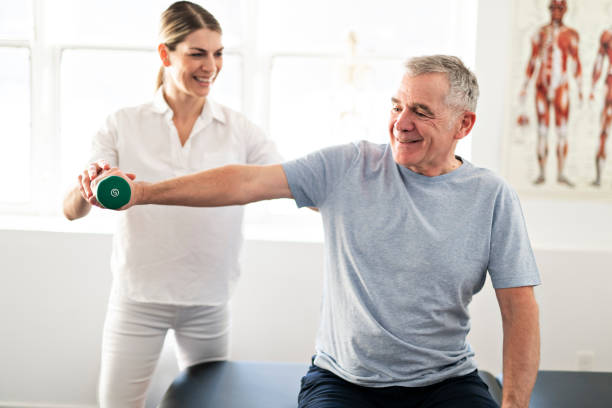
Expert Recommendations
Experts emphasize the importance of patience and consistency in the rehabilitation process. Each exercise or stretch should be performed within a pain-free range, focusing on slow, controlled movements.
The key part of recovery is to maintain the balance between rest and rehabilitation, allowing the shoulder to heal while preventing stiffness and weakness from setting in.
For those recovering from shoulder bursitis, these exercises and stretches, when executed correctly and under the guidance of a healthcare professional, can offer significant relief and aid in the return to normal function.
Always consult with a physical therapist or orthopedic specialist to tailor the rehabilitation program to your specific needs, ensuring the best outcome for your shoulder health.

References
American Academy of Orthopaedic Surgeons. (2020). Shoulder Bursitis. Retrieved from https://orthoinfo.aaos.org/en/diseases--conditions/shoulder-bursitis/
Kibler, W. B., Sciascia, A., & Dome, D. (2016). Evaluation and management of shoulder pain in primary care clinics. South Medical Journal, 109(12), 785-791. https://doi.org/10.14423/SMJ.0000000000000572
Lewis, J. (2014). Rotator cuff tendinopathy/bursitis. In Clinical Sports Medicine. (4th ed., Vol. 1, pp. 110-123). McGraw-Hill Education.
Page, P. (2011). Shoulder muscle imbalance and subacromial impingement syndrome in overhead athletes. International Journal of Sports Physical Therapy, 6(1), 51-58. Retrieved from https://www.ncbi.nlm.nih.gov/pmc/articles/PMC3105366/
Pedowitz, R. A., Yamaguchi, K., Ahmad, C. S., Burks, R. T., Flatow, E. L., & Green, A. (2011). Optimizing the management of rotator cuff problems. Journal of the American Academy of Orthopaedic Surgeons, 19(6), 368-379. https://doi.org/10.5435/00124635-201106000-00006
For More Training Advice + Diet and Lifestyle visit us RIPL Fitness
PS: Make sure you check out the rest of our Shoulders Training Guides:
Supraspinatus Stretch: Your Supraspinatus Muscle & Rotator Cuff
8 Best Compound Shoulder Exercises
Around the World Shoulder Exercises + Workout
5 Frozen Shoulder Exercises For Pain Relief
10 Best trx shoulder exercises | TRX Suspension Training
Shoulder Calisthenics Workout | Bodyweight Shoulder Workout
10 Best Shoulder Dislocation Rehab Exercises
16 Best Cable Shoulder Exercises To Build Muscle & Shape Delts
Shoulder Impingement Exercises For Shoulder Impingement Syndrome
The 10 Best Cable Shoulder Workouts & Cable Shoulder Exercises

